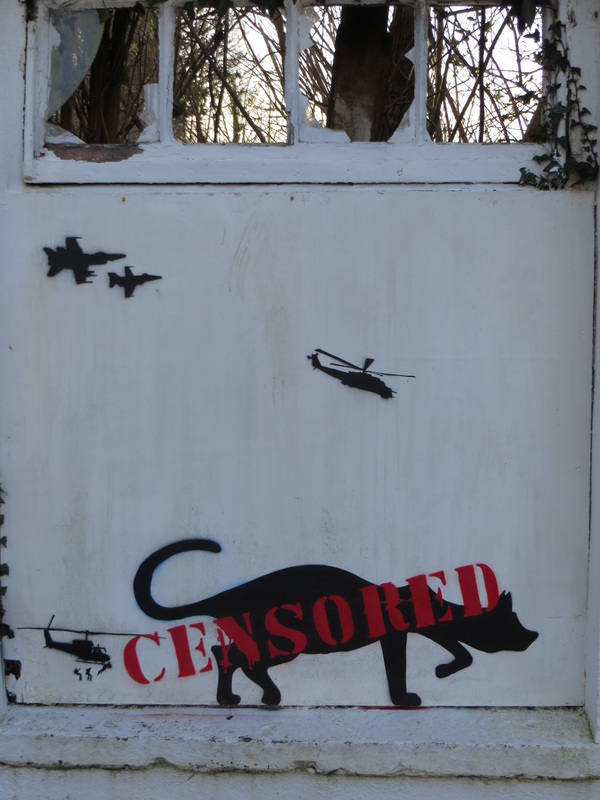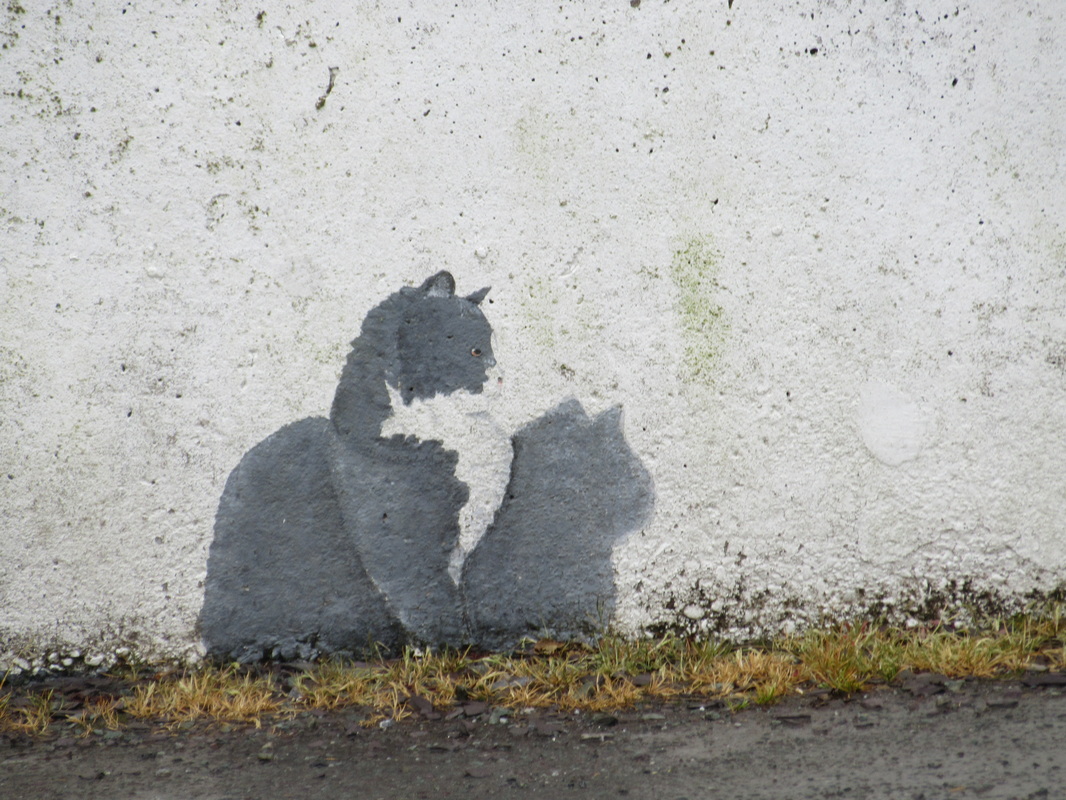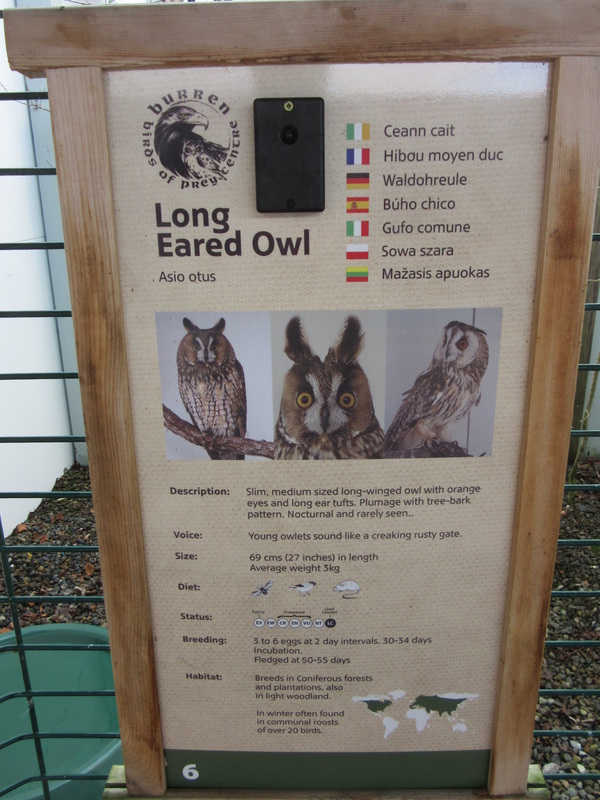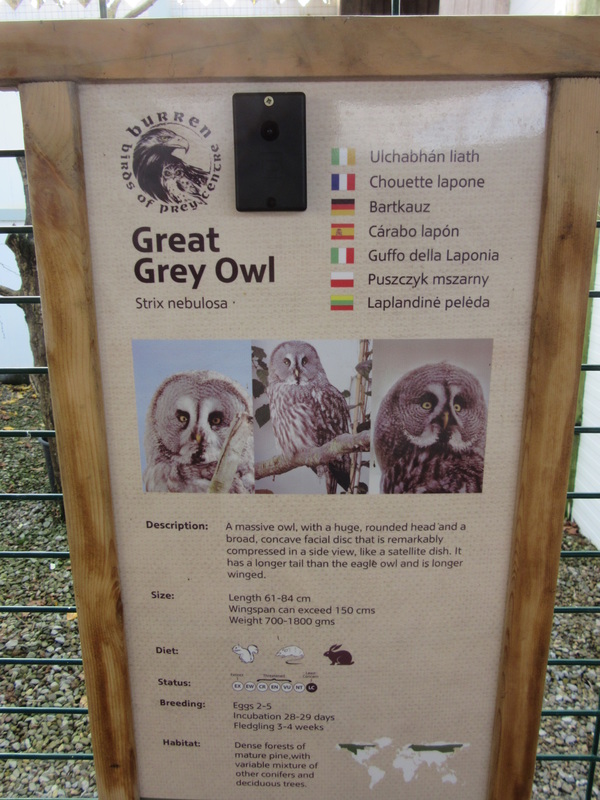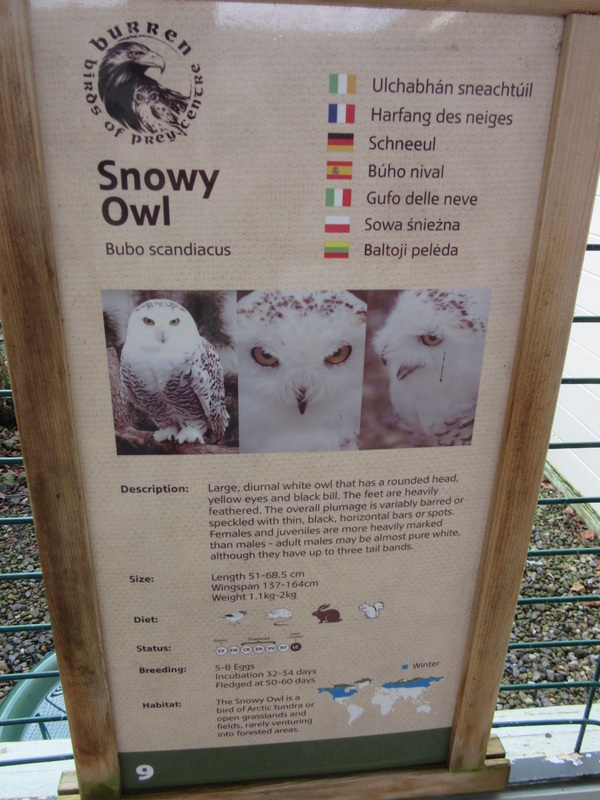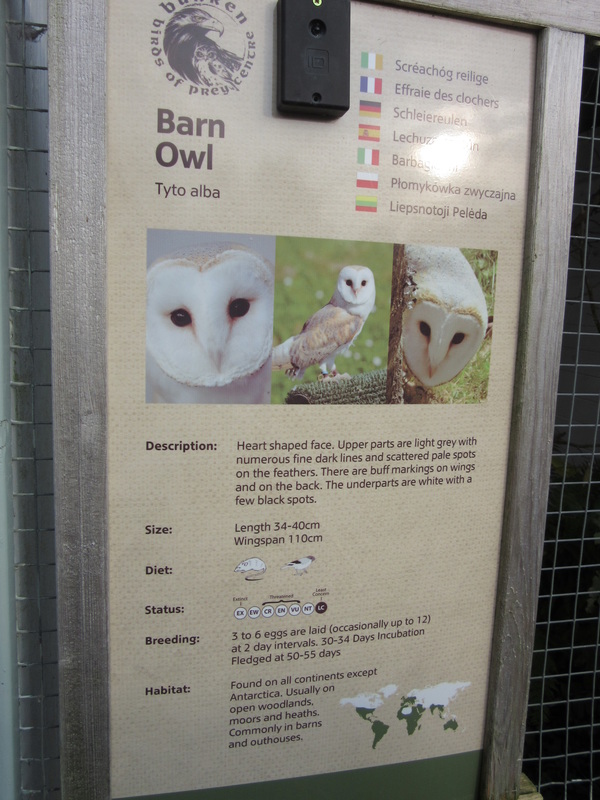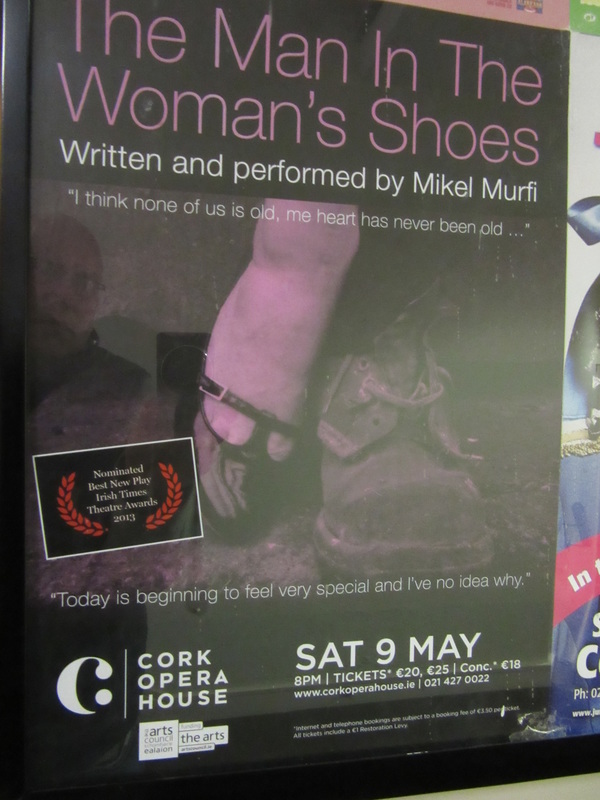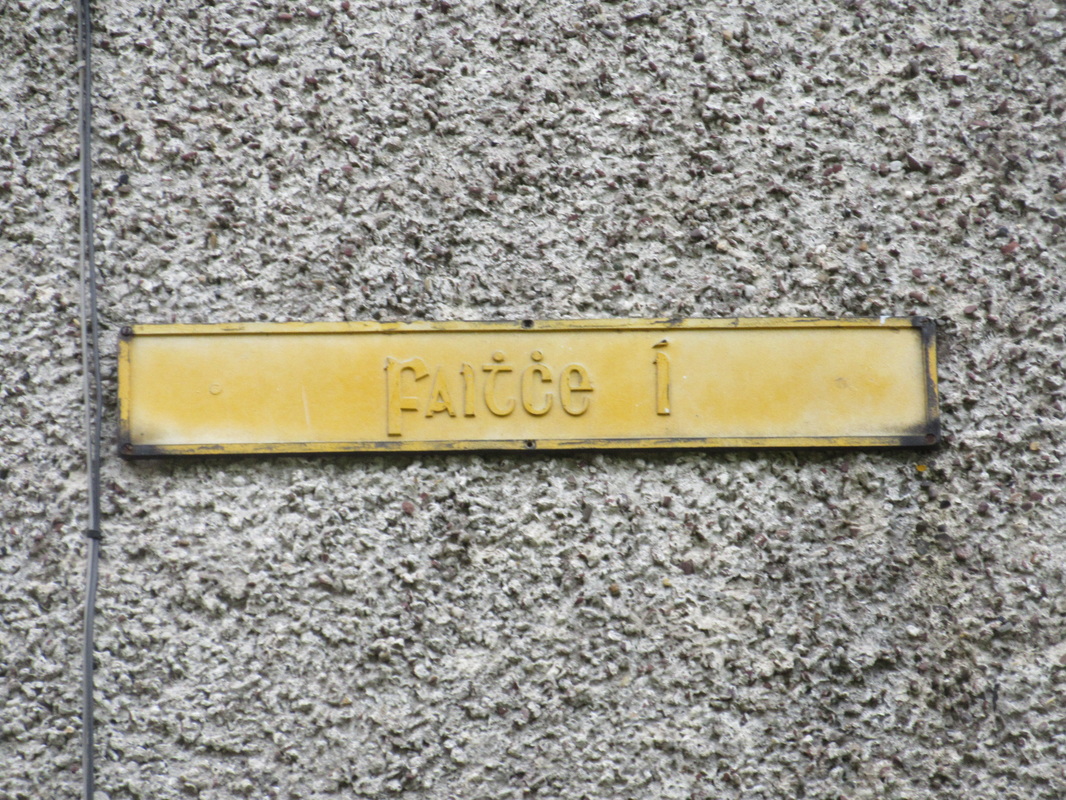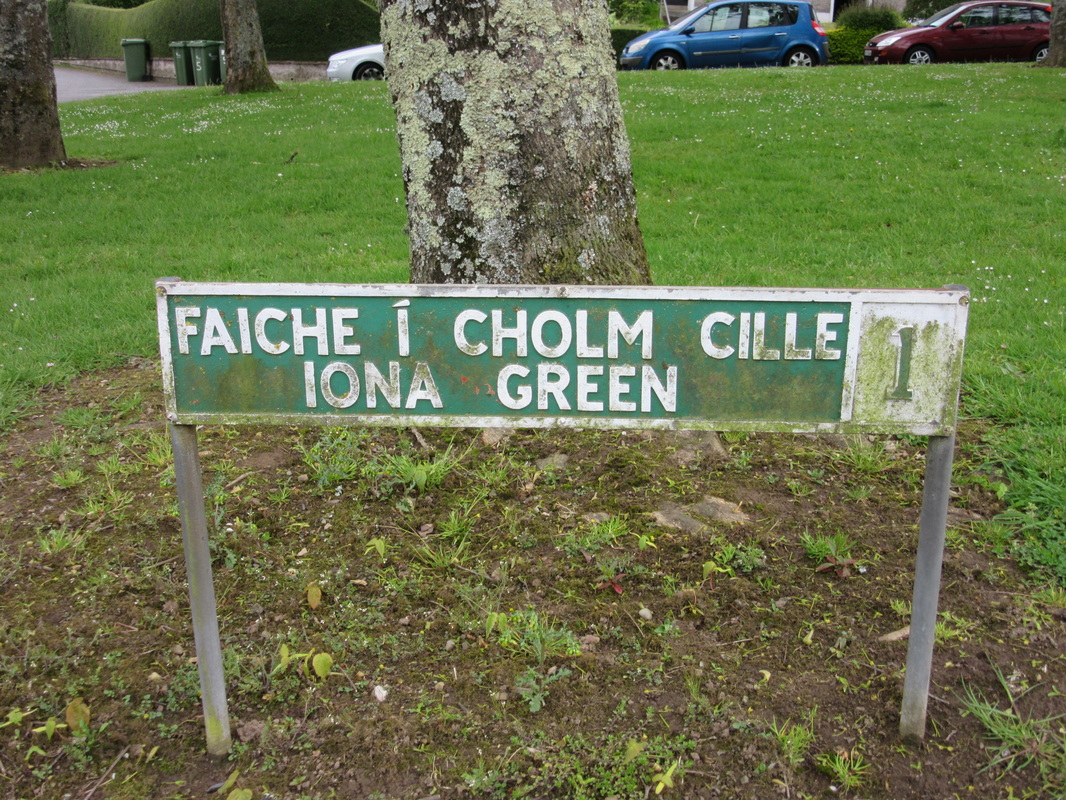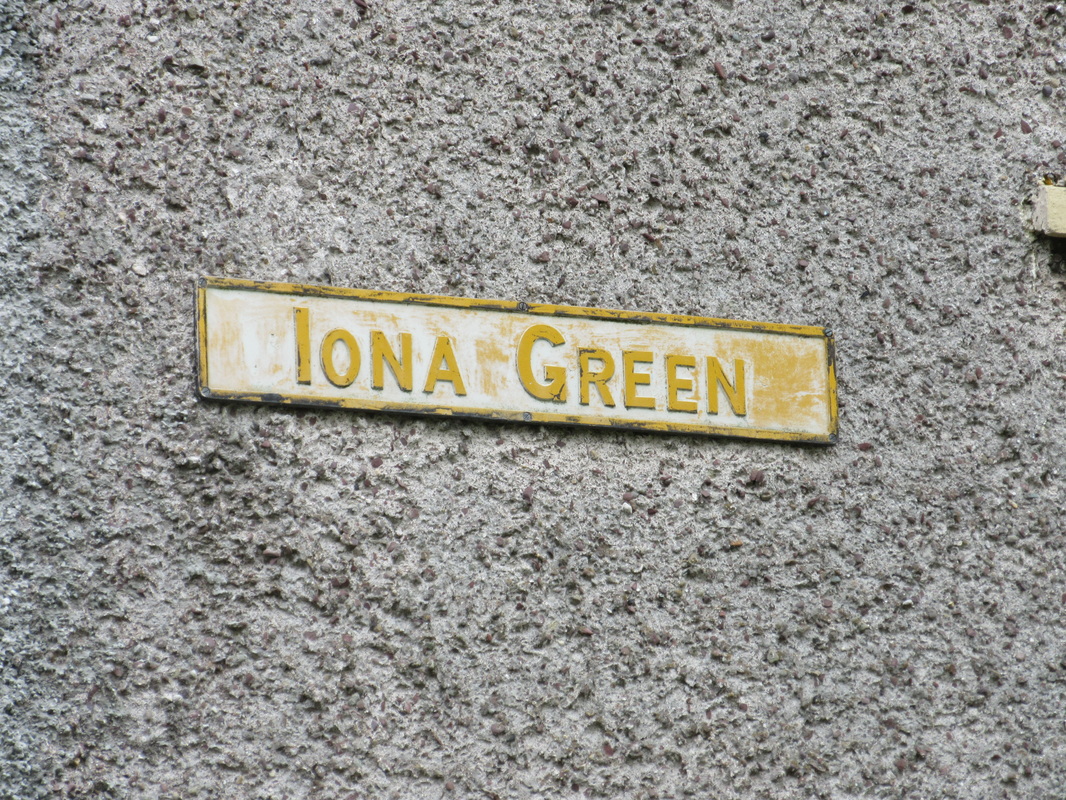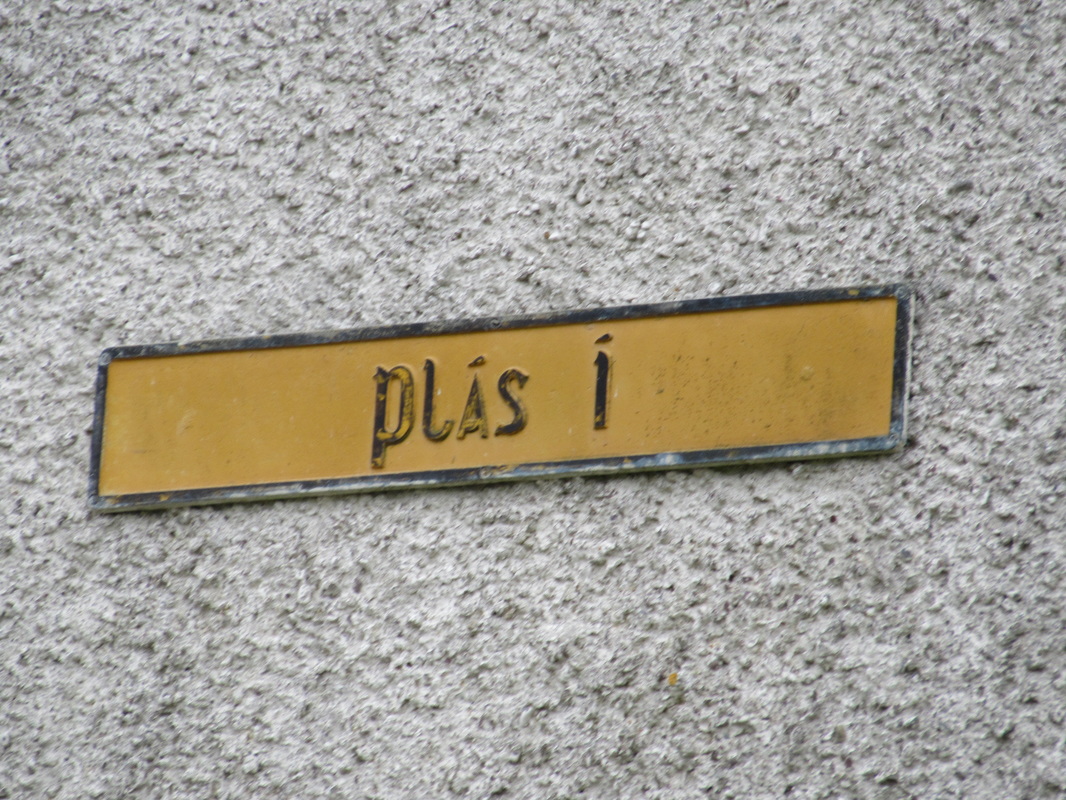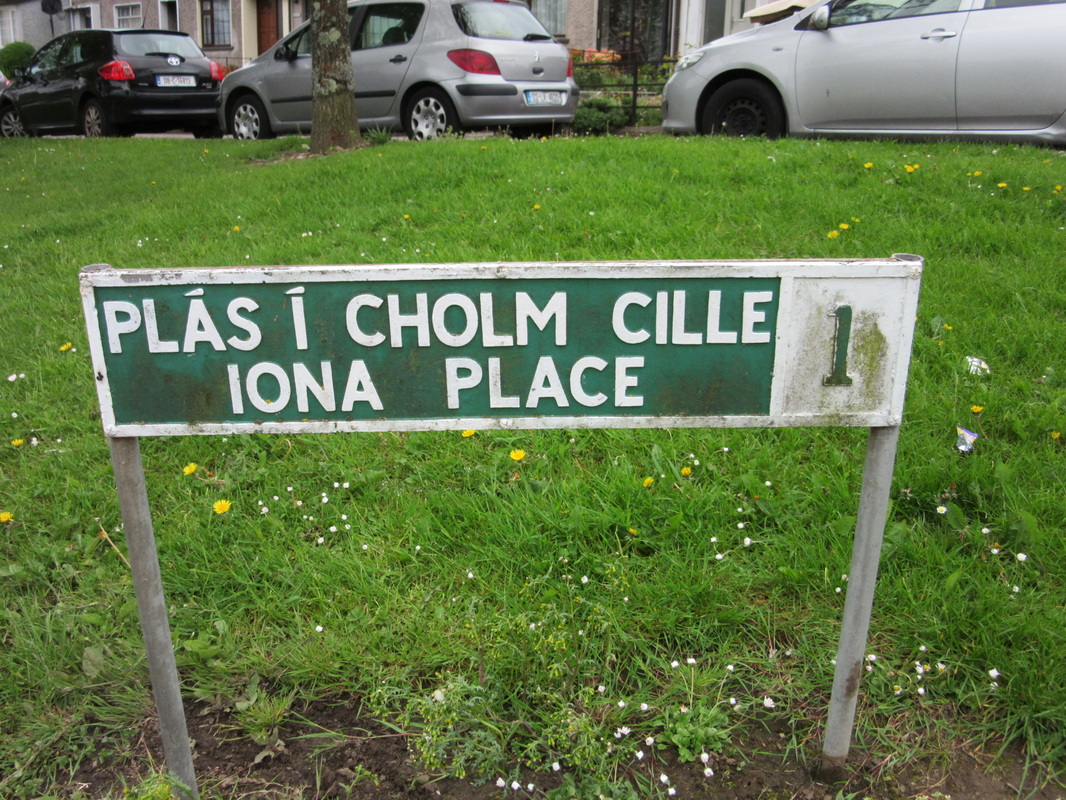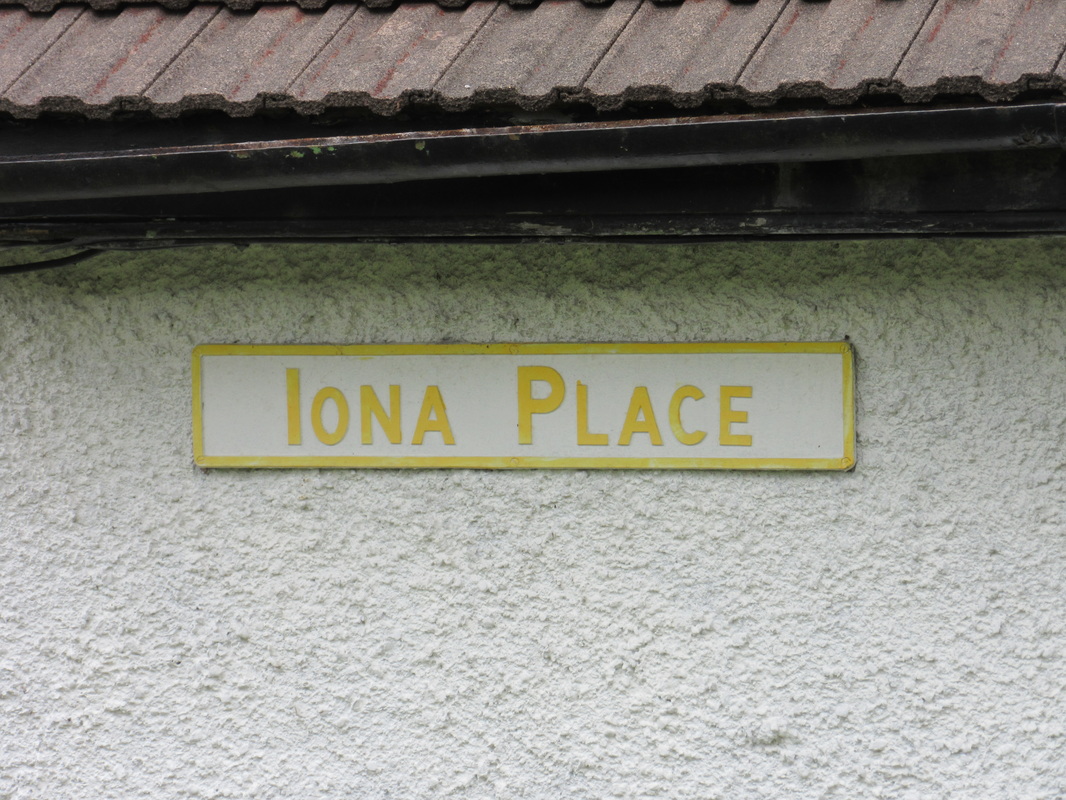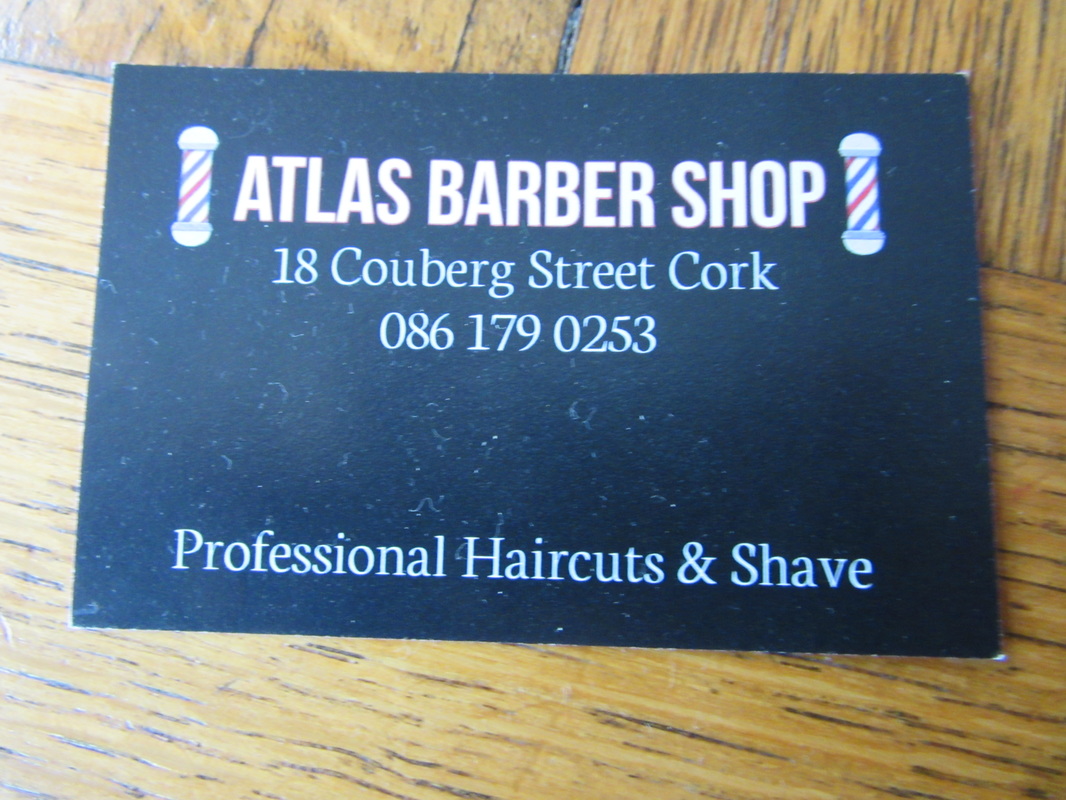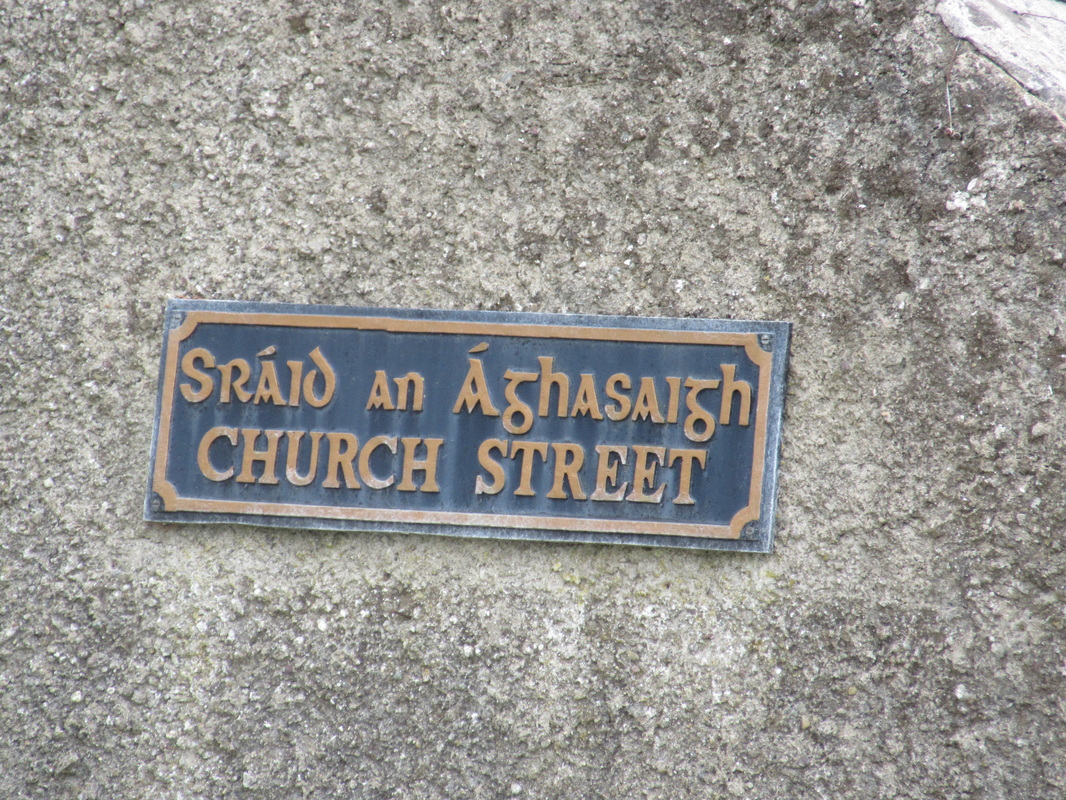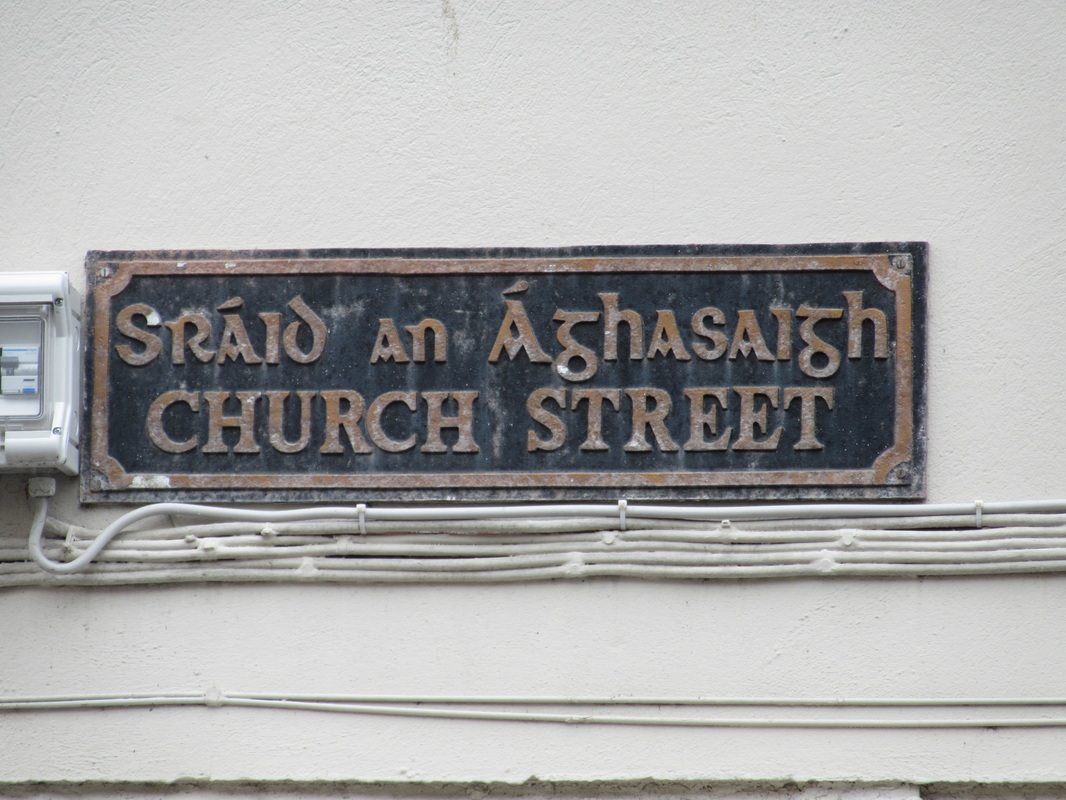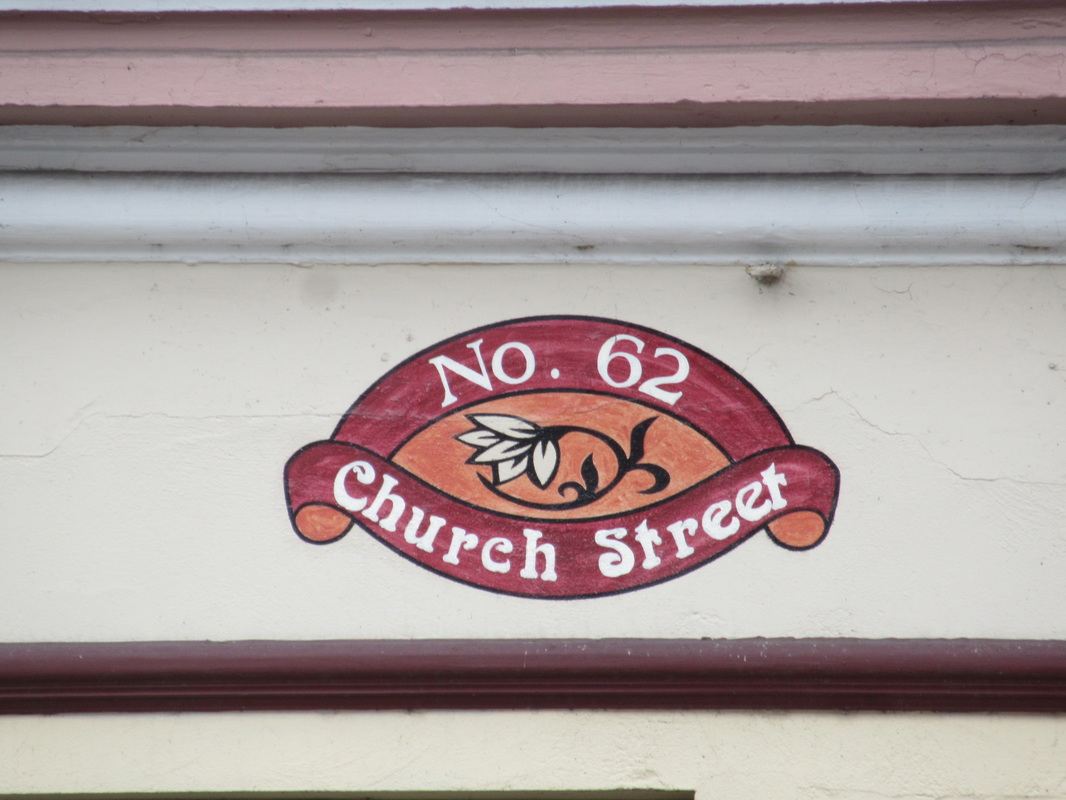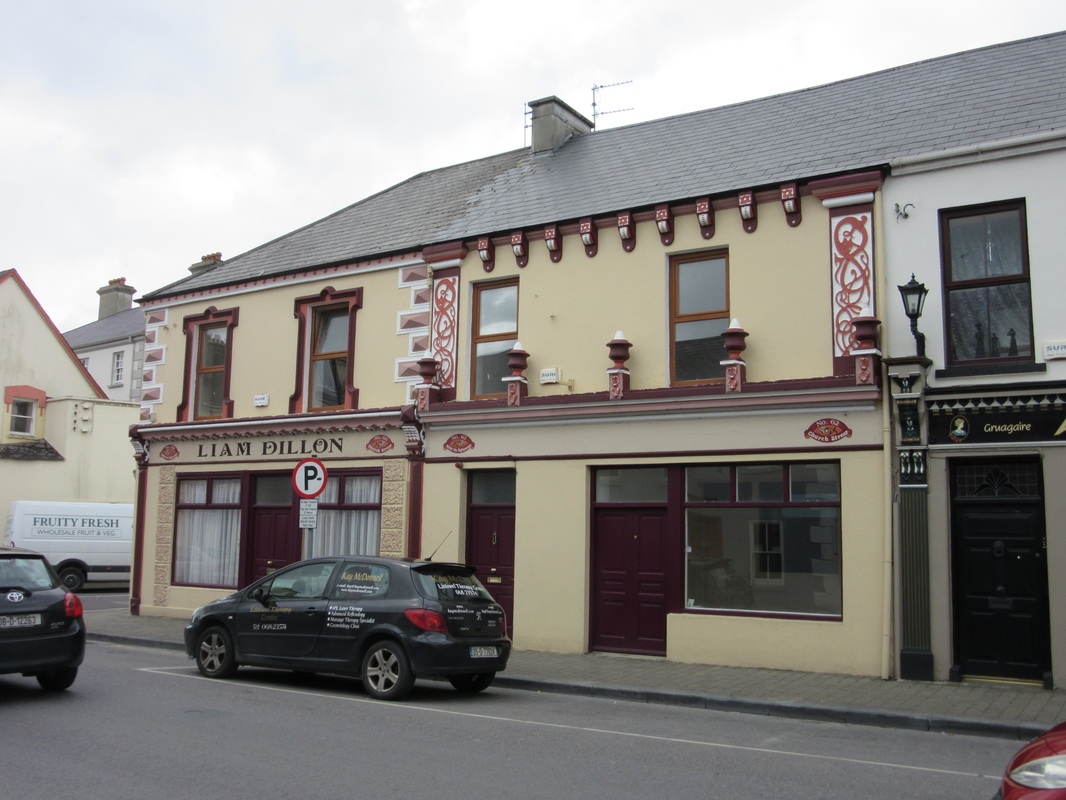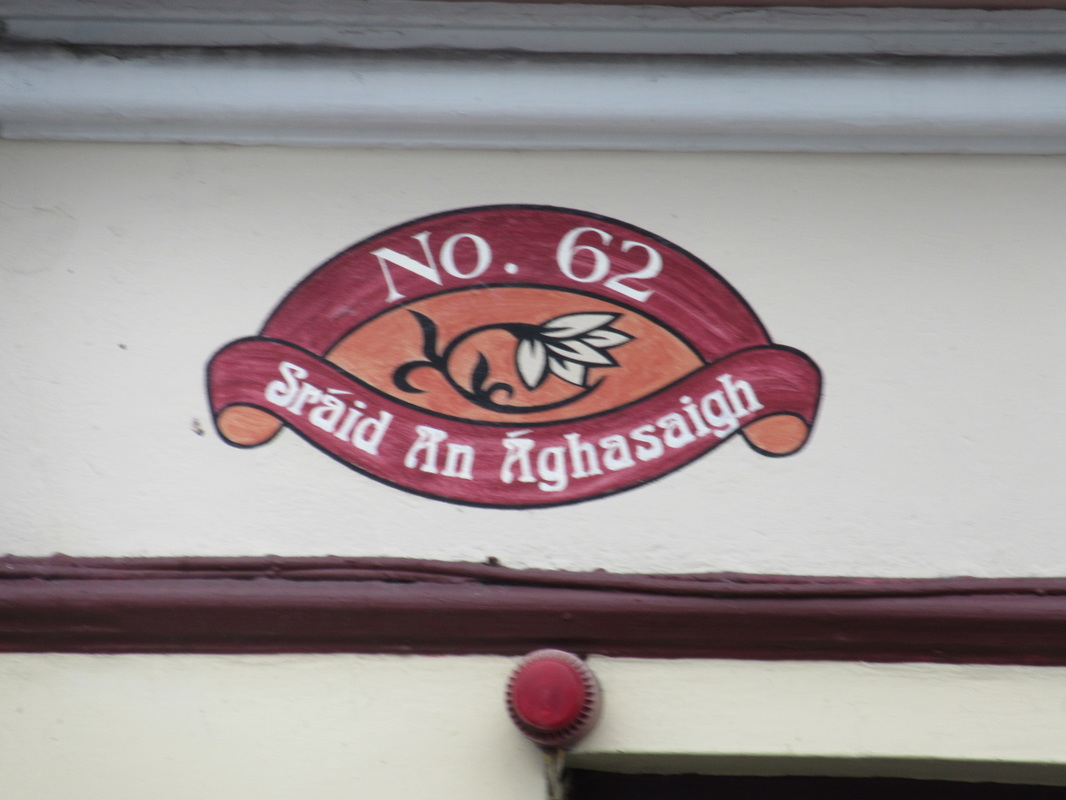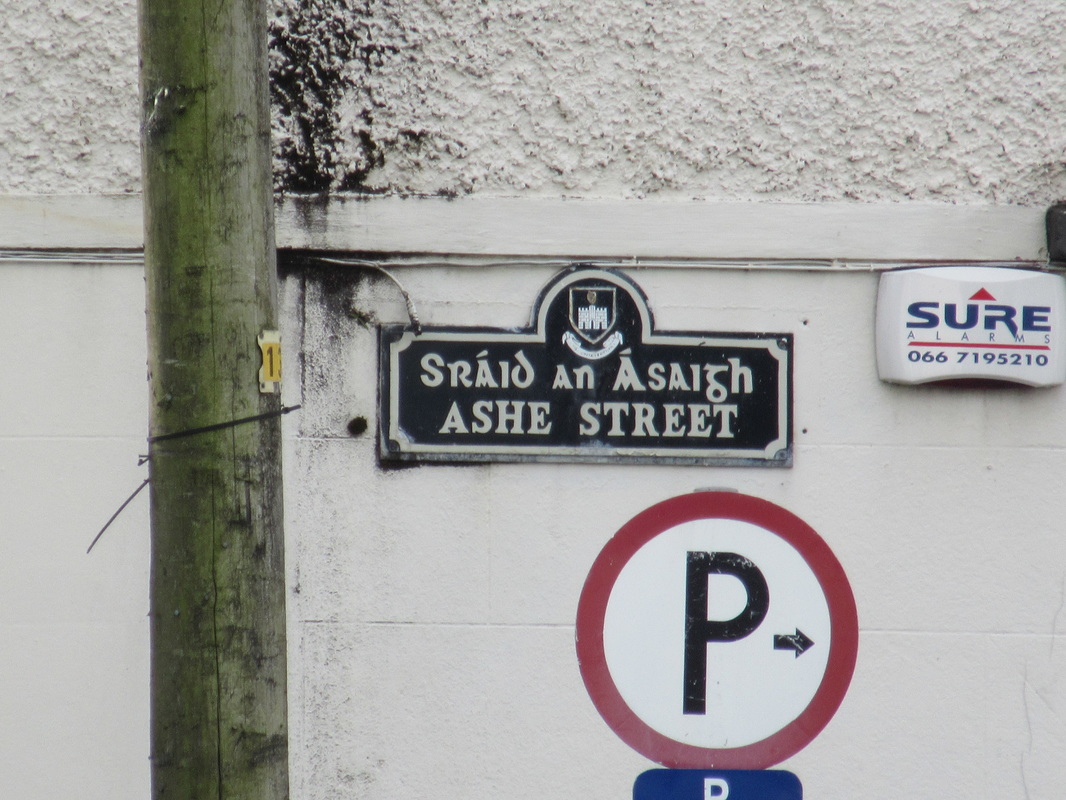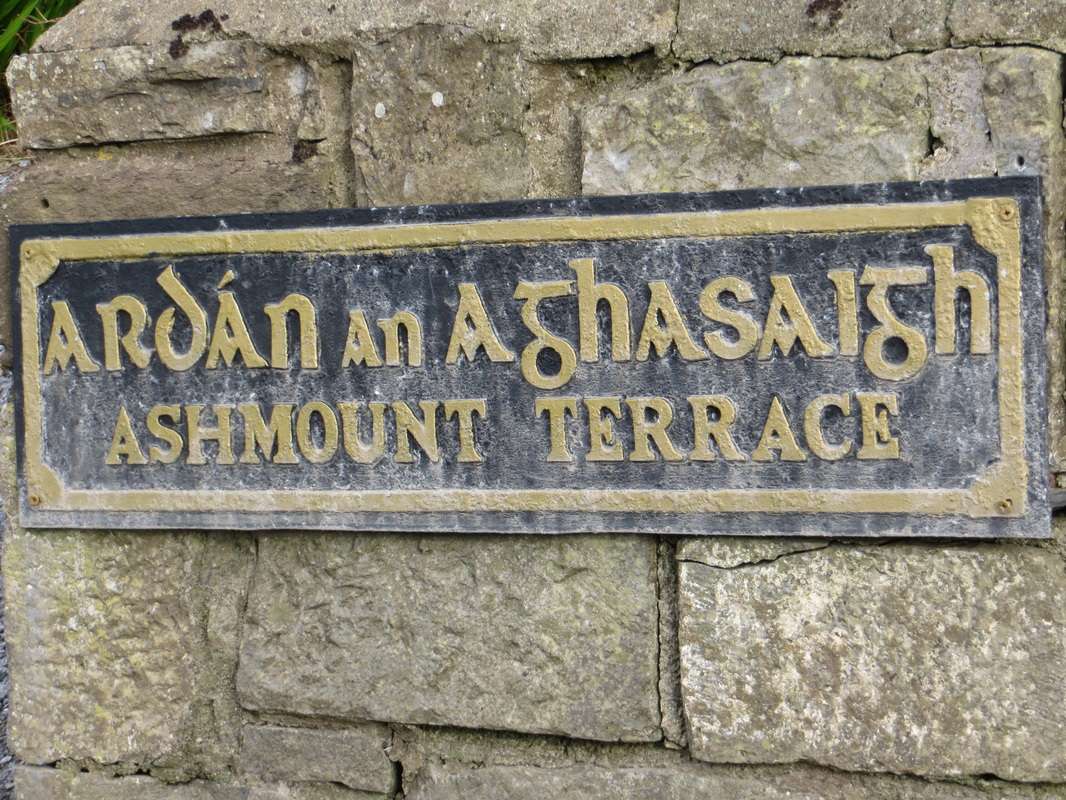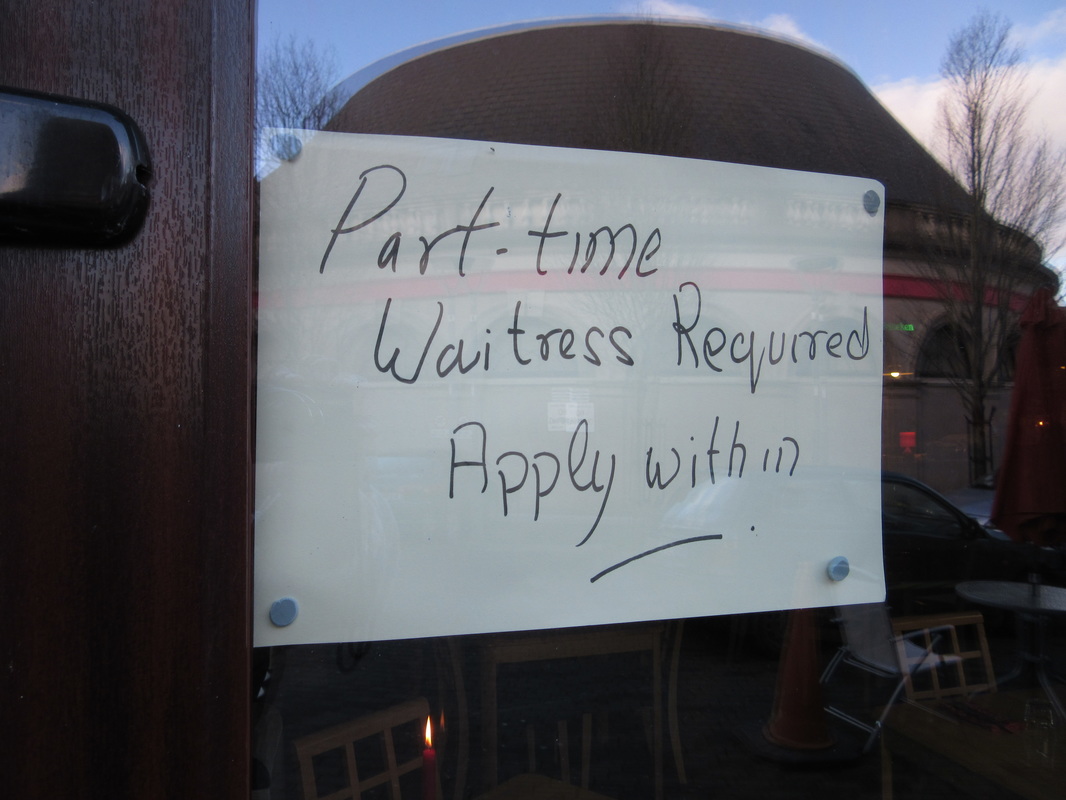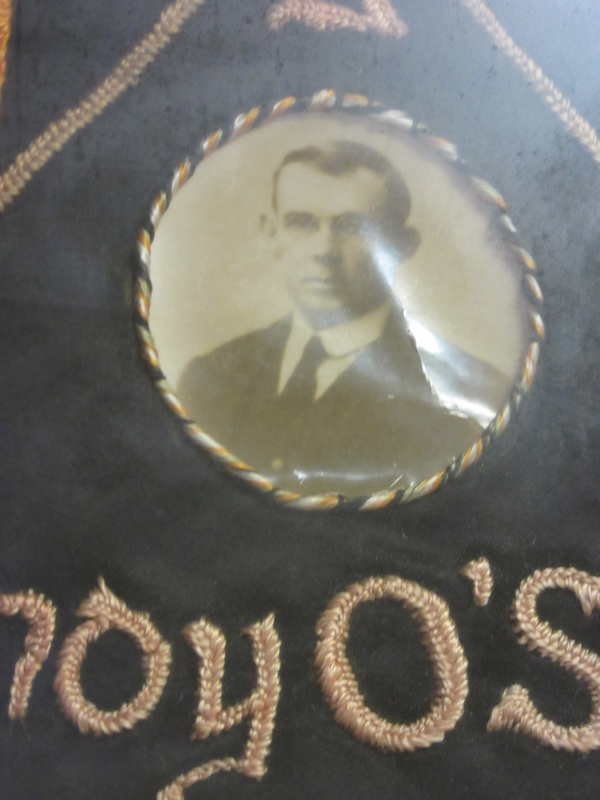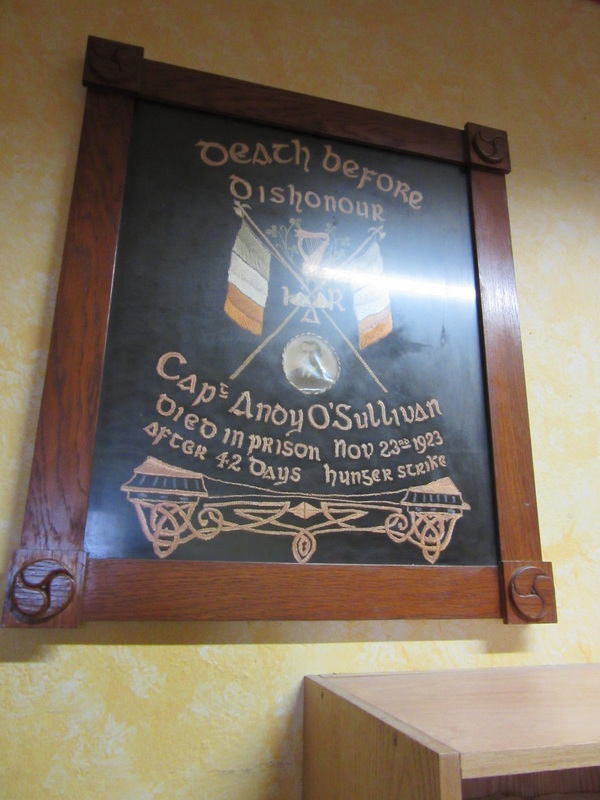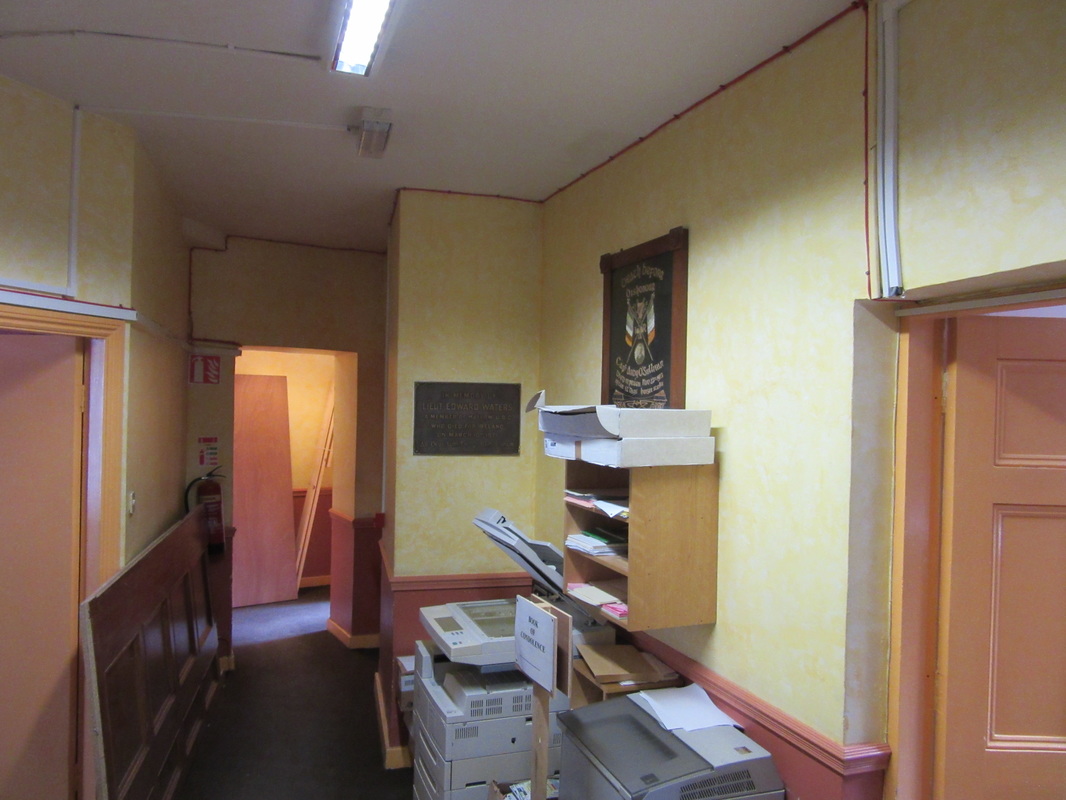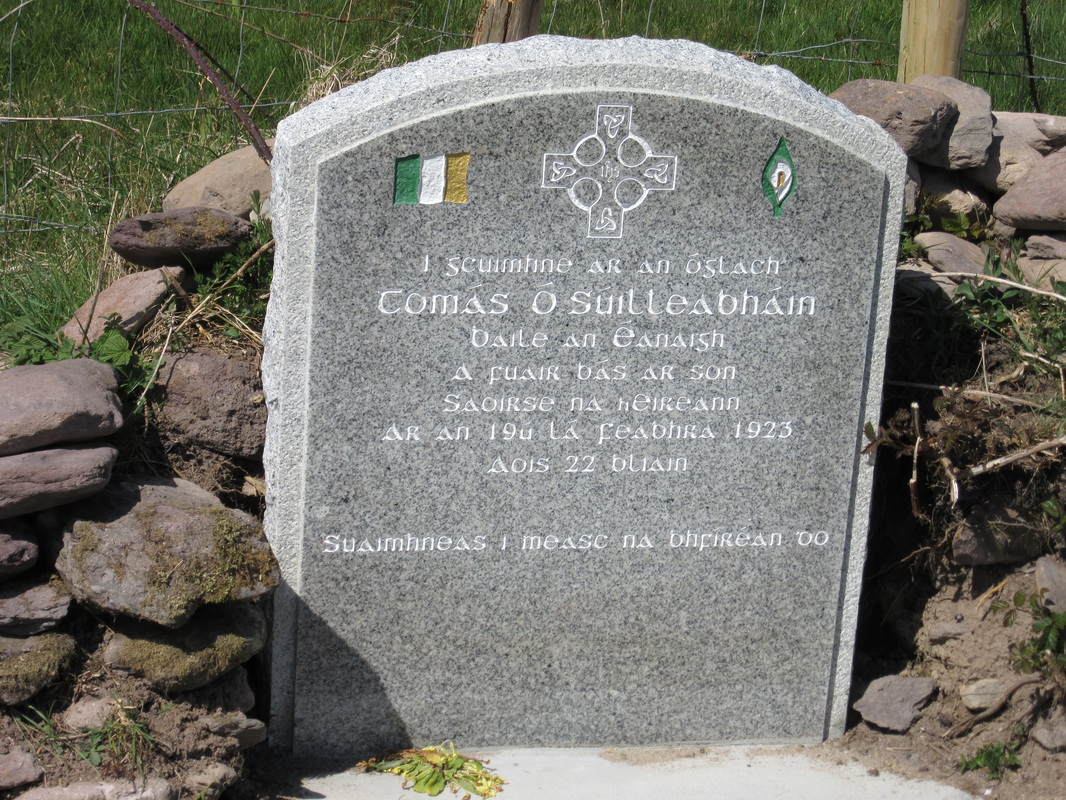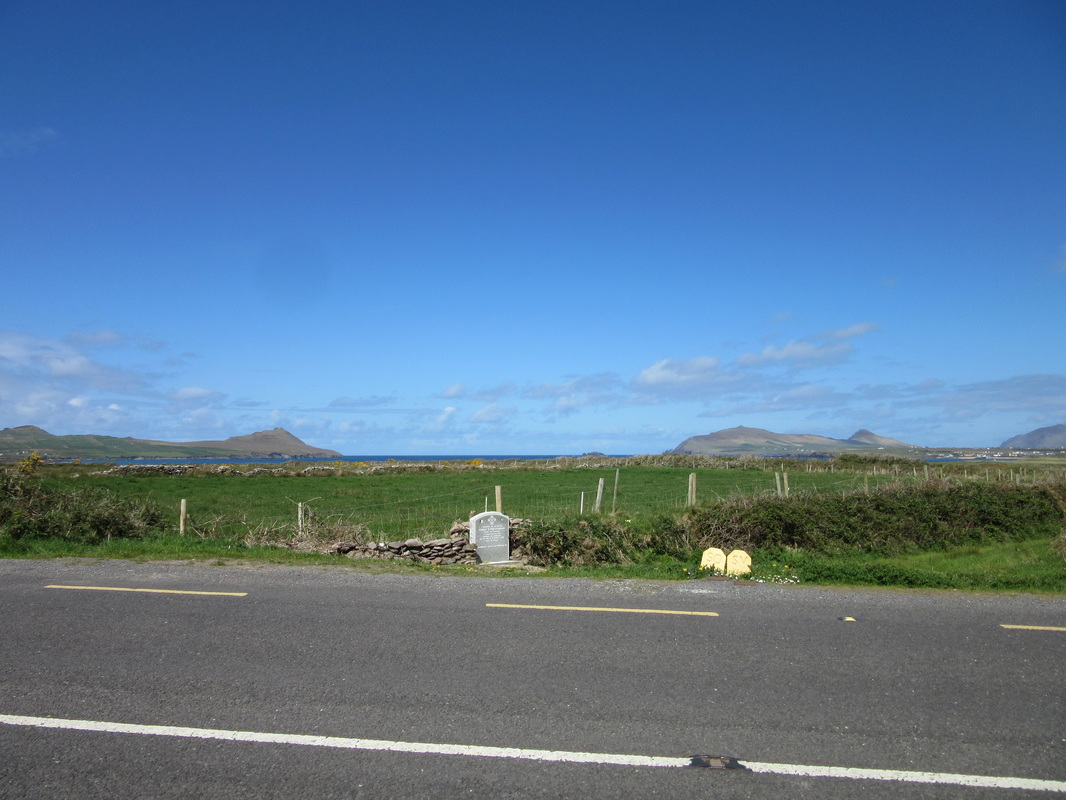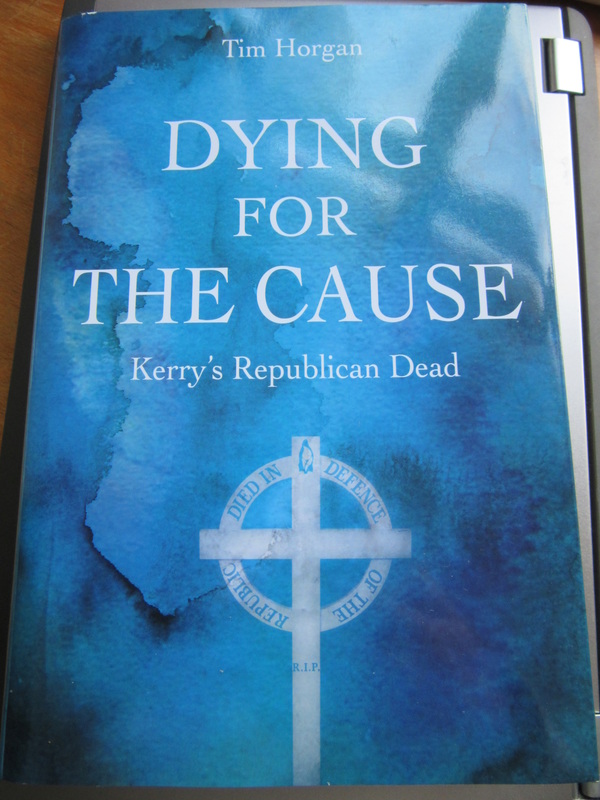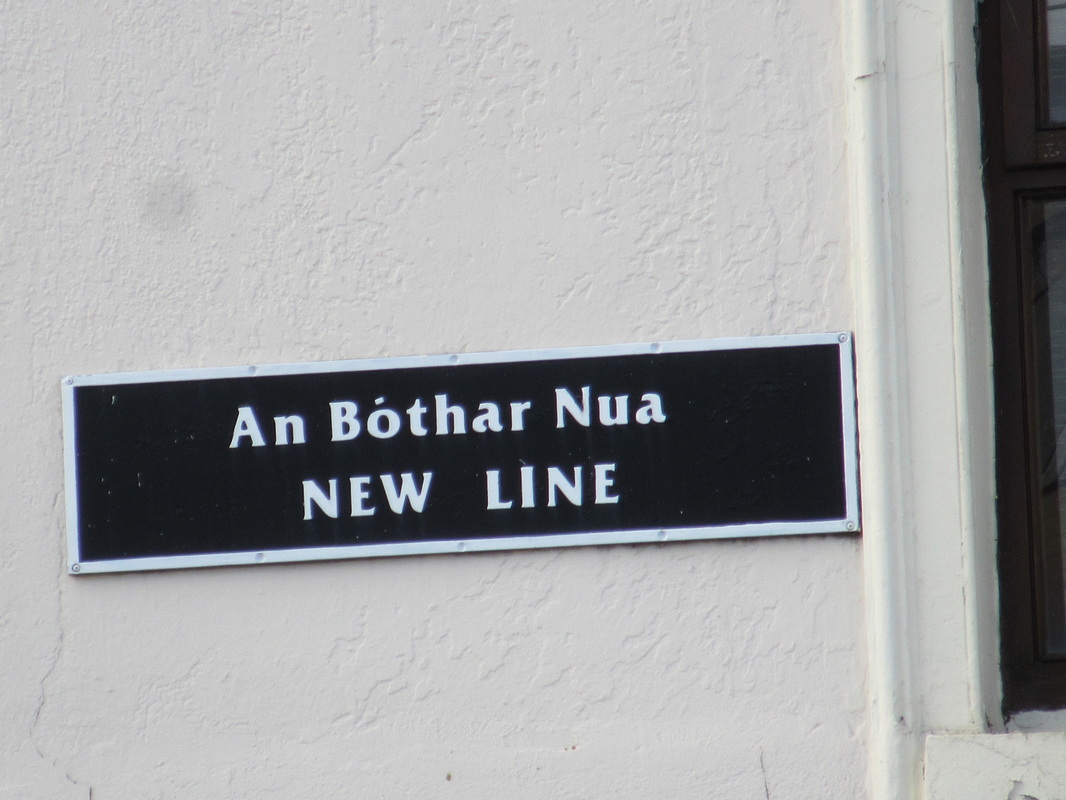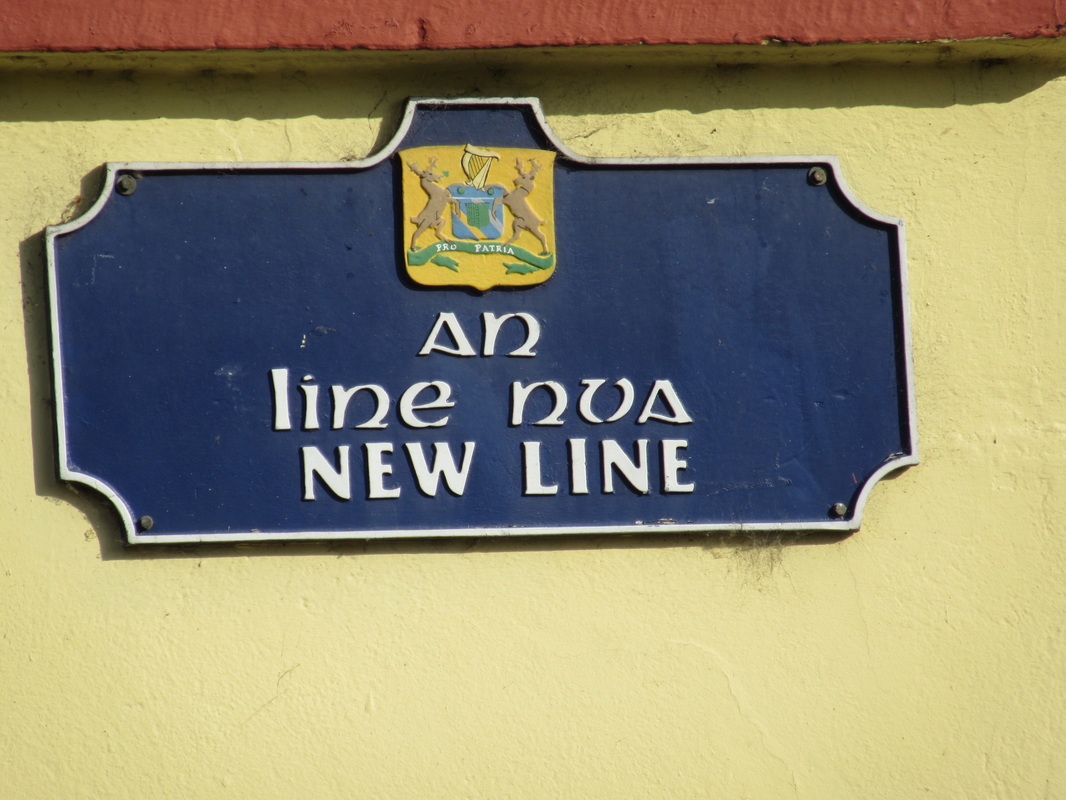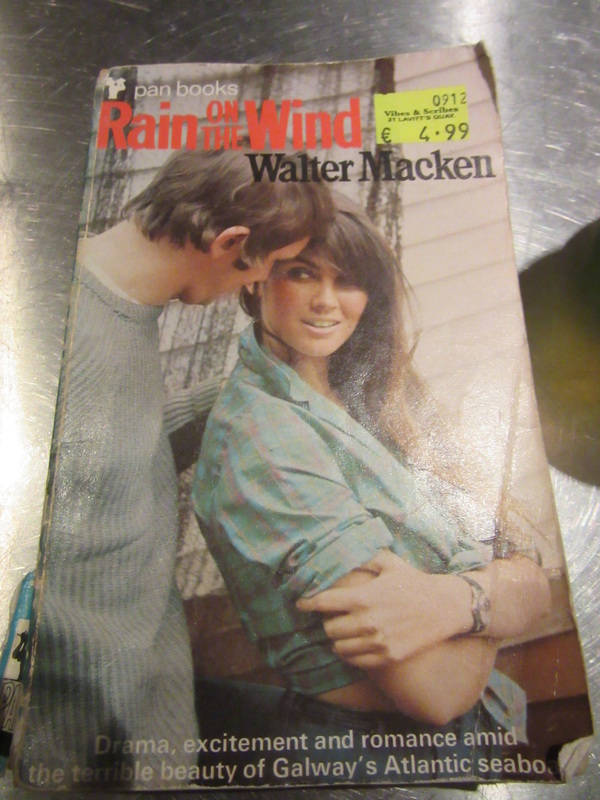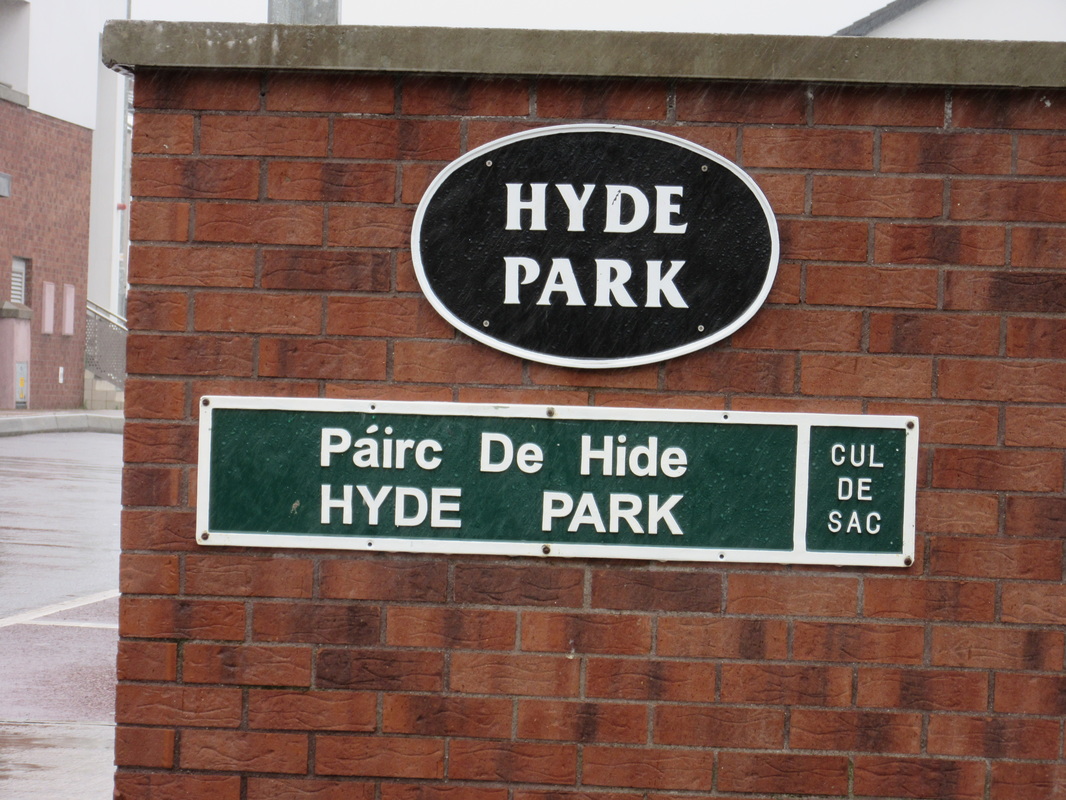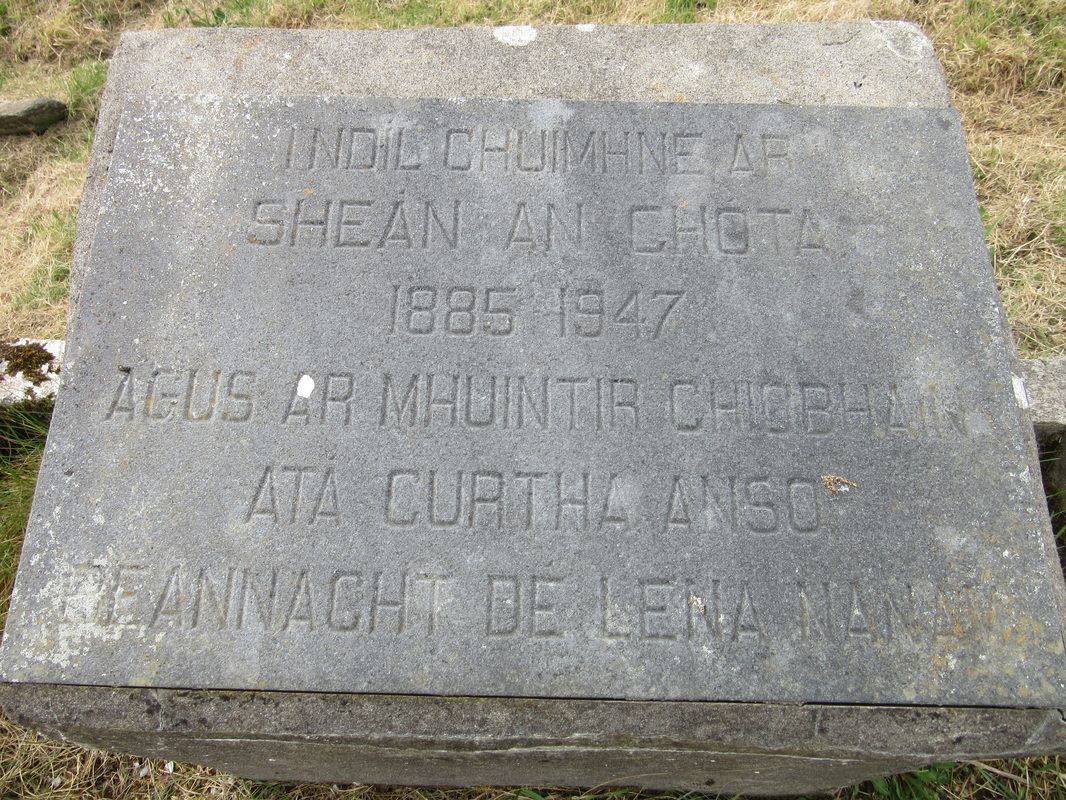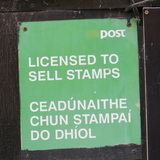|
It has been a short while since I put up some street art – so might as well put that to right and follow on from yesterday’s Cat’s Head.
0 Comments
Last year I contemplated the Irish translation of the different variety of owls at the Birds of Prey Centre at Ailwee Caves. Most owls were translated as ‘Ulchabhán’ whereas the Barn Owl was ‘Scréachóg Reilige’. During the year, I was speaking with SOB, who commented that Barn Owls were native to Ireland and so the name of ‘Scréachóg Reilige’ (Graveyard Screecher) possibly predates the standardisation (Ulchabhán). Regardless, I think it such an apt name to put on the Barn Owl. Going through my photos from our visit to Santa last Christmas, I noted that the Long Eared Owl also was not translated as ‘Ulchabhán’. Again it appears to be native to Ireland. Its name in Irish again appears so appropriate – Ceann Cait – Head of a Cat. UPDATE 2018.10.29 Another wonderful tweet from Robert MacFarlane educated that the Jay is known ‘as Gaeilge’ as "Scréachóg Choille" – Screecher of the Woods.
Last Saturday, I treated myself to a trip to ‘The Man in the Woman’s Shoes’ at the Cork Opera House.
The performance of Mikel Murfi was immense. It is a one-man show where he includes words spoken by 7 or so other human characters who he meets on the day, and some non-humans. This was not done alone by tone and accent but also by posture and head position. The discussions between these various characters were powerful and so impressive to see. The anecdote of telling the bees was new to me and again a different emotion so well portrayed. The humour was spot on – both in terms of quality and quantity. The individual scenes were so well crafted and tied together. The overall story was not so brilliant to be life-changing or forever to stay in the memory but it was a perfect medium to connect the scenes and provide for such a performance. If it is nearby, I strongly recommend a night out – you will enjoy and be so impressed with Mikel Murfi. On this day in 563, St. Columcille formed a monastery in Iona – so I learned from the daily update from Stair na hÉireann.
Last evening, I was walking about in the Mayfield area and noted that Iona used to be translated simply as ‘Í’ but the authors of the newer streetsigns have thought that further explanation is required to associate with Columcille. Me, I prefer the simple’Í’…. I used to go for a haircut.
For some time, I have realised that reseeding is a word used for grass and receding is the word that applies to my head – thus rendering the scissors useless, replaced by a couple of minutes with a razor. Head shave is my present and my future. Last week, as well as my head shave, I also spotted a new variation on the alternatives for Coburg Street.  Some might consider it odd. Some might consider it a depressing thing to do. Me. I’m different – not for the first and not for the last time. I enjoy walking in graveyards. There are stories to be imagined from the writing on the headstone. I have learned a lot of history from dots started in cemeteries. Some of the headstones are works of art that can be appreciated in their own right. I started this an hour or so ago – I took that time to create a category called Cemeteries and went back to the archive adding the tag to blog entries. There were quite a few blog entries inspired by what was found on headstones and in cemeteries. I have been introduced to songs by Bruce Springsteen, Johnny Cash, Harry Lauder - just from reading headstones and wondering as to the words. Last June was my first trip to Co. Cavan. Early one morning, the message on this headstone at Blacklion was of such impact that it was photographed. Today I was going back through photographs and was reminded of this headstone. The web provided a link to the poem which provided so much more than can be expressed on a headstone – a way of life; a time past; a family relationship. Enjoy. There are very many towns in Ireland with a Church St– Listowel’s is a bit unusual.
Logainm has various translations including Sráid na hEaglaise; Sráid an Teampaill; and Sráid na Cille. We were in Listowel on Thursday after Kathleen’s funeral and I noted that the translation was Sráid an Ághasaigh – which appears to literally translate as Ashe St. I do not know why this anomaly in translation exists but would like to think that it is similar to Coburg Street in Cork – another on the To Find Out list. I was in Corca Dhuibhne a few weeks back and stopped to take a photograph of the Ashe Memorial. Only a few days ago, I blogged about Andy O’Sullivan who died on hunger strike and Thomas Ashe is said to be the first who died on hunger strike while campaigning for Irish freedom. All conspire to prompt today’s ramble. From checking my photos of streetsigns, maybe Dingle might be in a similar situation to Listowel where Ashmount Terrace translates from Irish as Ashe Terrace. 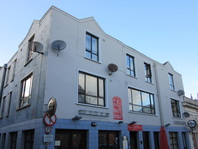 Recently, we were walking through the Shandon area and I spotted this sign on the window of a restaurant. I had thought that such a notice would have fallen foul of the discrimination act. Maybe the Four Liars know better or have a reason for female staff…. Regardless, it is good to see signs such as this on windows. I have noted quite a few in the last month or so – maybe the stench of the Celtic Corpse is passing. Further realisation that photographing all Civil War and War of Independence memorials will be near impossible.
Some are local on backroads and boreens. Then there are new monuments being erected. As I found out in Mallow Town Hall last week, there are also then memorials within buildings – these, in buildings, will be the most challenging to find. Edward Waters is also remembered at Glantane and at Naad. He is buried at Newbury. Capt. Andy O’Sullivan is also remembered on the monument at the bridge in Mallow and at Cavan Courthouse. He with Denis Barry is one of two who died on Hunger Strike - in which 8,000 participated. A further reminder to self to get these monuments up on the site.
Walter Macken was born 100 years ago yesterday – with thanks to the daily update from Stair na hEireann for that piece of information. I did blog some months ago about not having read any book by Walter Macken. That was then. ‘Rain on the Wind’ was completed over six months ago. Like buildings needing a few years to see if they age well and blend well with their surroundings, books also, I think, need time to mellow on the brain and find a comfortable spot. This spot may be within reach or in some deep dark closet that is soon forgotten – most novels tend to end up in such a closet. Maybe this is because or as a result of my reading generally being of non-fiction. ‘Rain on the Wind’ was a welcome break from non-fiction. I can still picture the house, the boat and nearly-dead goose. The characters and their inter-relationships are still fresh – the father-in-law who knew his place; the son who knew he was not favourite; the youth with difficulty in going beyond friendship; the long lasting school friendship – each were well captured as was the dying of a trade with introduction of technology. It appeared to be written very much in an Irish English – as if I was reading expressions and manner of speaking almost directly translated. More descriptive. I enjoyed that. I will never make it as a book reviewer. There are very many better suited to that task. So do not expect to see too many blogs like this. But that is no reason not to express what was very much enjoyed – so much so that a book of short stories (part-read) and his biography are on the book shelf next to me. If you spot it on a bookshelf looking for a home, you could do a lot worse.
Not content with one misspelling, Cork City Council prefer two obviously.
There should be a síneadh fada over the ‘I’ and the ‘I’ should in upper case – as I understand. If Wikipedia can get it right, one might suppose that Cork City Council could too. I suppose it is another opportunity to check on my Irish grammar – when ‘h’ is used to change a word, the ‘h’ is lower case. So if the word should start with a capital letter, it is the vowel that is made upper case, not the mutating ‘h’. So that is why you might see the likes of Hector Ó hEochagain, and Cathal Ó hEochaidh – also surnames such as Ó hÍcí and Ó hÓgain. To my amount of Irish, it should be Páirc de hÍde - I wonder if Cork City Council will be ordering replacement signs. I NDÍL CHUIMHNE AR Last weekend was spent in Ballyferriter improving my spoken Irish.
Chatting with SOB on Saturday morning I learnt that both of Kruger’s brothers each wrote an Irish dictionary. Séamus Caomhánach was a professor at UCC and was one of the authors of Hessen’s Irish Lexicon: a concise dictionary of Early Irish with definitions in German and English. Seán Óg Ó Caomhánaigh wrote Croidhe Cainnte Ciarraighe. He led the Dún Chaoin company of Volunteers. He was a teacher who had Sean Moylan among his pupils. He is mentioned in the Bureau of Military History Witness Statement of Ernest Blythe, I was told that Seán was generally known as ‘Seán an Chóta’ [Sean of the coat] and it would not have been unusual to have heard an expression such as ‘the coat is coming through the door’, such was the regularity of use of the nickname. Any doubt I had regarding this story was dispelled when I spotted his headstone in Dunquin cemetery – the family name (Muintir Chiobháin) much less significant than the nickname. |
AuthorFrom Cork. SUBSCRIBE
Unless otherwise specifically stated, all photographs and text are the property of www.readingthesigns.weebly.com - such work is licenced under a Creative Commons Attribution - ShareAlike 4.0 International Licence
Archives
April 2024
Categories
All
Blogs I Read & LinksThought & Comment
Head Rambles For the Fainthearted Bock The Robber Póló Rogha Gabriel Patrick Comerford Sentence First Felicity Hayes-McCoy 140 characters is usually enough Johnny Fallon Sunny Spells That’s How The Light Gets In See That Tea and a Peach Buildings & Things Past Built Dublin Come Here To Me Holy Well vox hiberionacum Pilgrimage in Medieval Ireland Liminal Entwinings 53degrees Ciara Meehan The Irish Aesthete Líníocht Ireland in History Day By Day Archiseek Buildings of Ireland Irish War Memorials ReYndr Abandoned Ireland The Standing Stone Time Travel Ireland Stair na hÉireann Myles Dungan Archaeouplands Wide & Convenient Streets The Irish Story Enda O’Flaherty Cork Archive Magazine Our City, Our Town West Cork History Cork’s War of Independence Cork Historical Records Rebel Cork’s Fighting Story 40 Shades of Life in Cork Roaringwater Journal |
